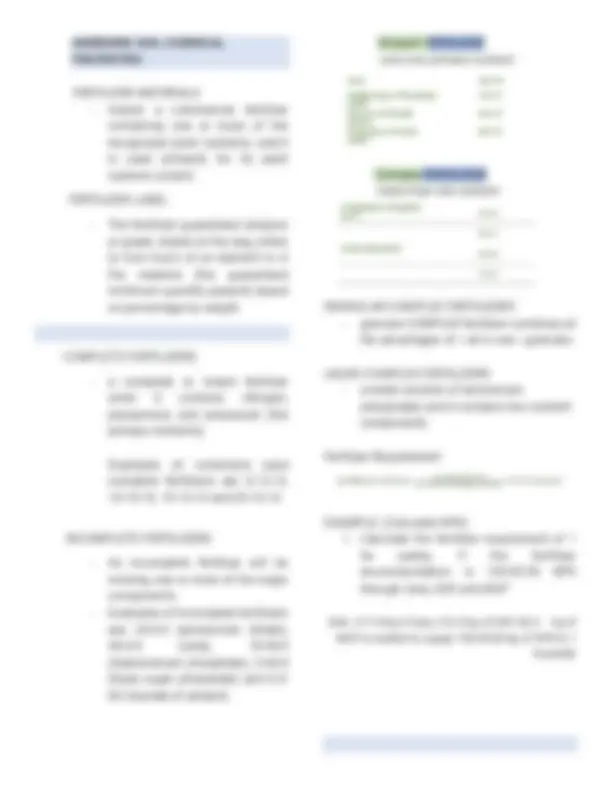




Study with the several resources on Docsity

Earn points by helping other students or get them with a premium plan


Prepare for your exams
Study with the several resources on Docsity

Earn points to download
Earn points by helping other students or get them with a premium plan
Community
Ask the community for help and clear up your study doubts
Discover the best universities in your country according to Docsity users
Free resources
Download our free guides on studying techniques, anxiety management strategies, and thesis advice from Docsity tutors
An overview of the fertilizer industry, including the types of nutrients needed for plant growth, the history of fertilizer development, and the processes involved in producing organic fertilizer. It also discusses the benefits of organic fertilizer and the major local producers of fertilizer. the value chain of the fertilizer industry and the flow sheet for fertilizer production. It also covers the deficiencies that can occur in plants due to a lack of nutrients.
Typology: Study Guides, Projects, Research
1 / 4

This page cannot be seen from the preview
Don't miss anything!



origin that is applied to soils or to
to the growth of plants and yielding the crop of fruits.
✓ Primary Nutrients (e.g Nitrogen, Phosphorus, Potassium) ✓ Secondary Nutrients (e.g Ca, Na, S, Mg) ✓ Micronutrients (Copper, Molybdenum, Cobalt) natural fertilizer = organic fertilizer synthetic fertilizer = chemical fertilizer HOW DOES FERTILIZER ARISE?
added ashes from burned weeds to soil.
added animal excretory to the soil.
developed the first complete mineral fertilizer, which was a mixture of saltpeter, lime, phosphoric acid, nitrogen, and potash
demonstrated that plants need mineral elements such as nitrogen and phosphorous in order to grow.
outlined a method for producing a form of phosphate that was an effective fertilizer.
synthesis of ammonia from its elements, hydrogen and nitrogen, earned him the 1918 Nobel Prize in Chemistry TYPES OF ORGANIC FERTILIZER
TWO MAJOR LOCAL PRODUCERS OF FERTILIZER
FLOW SHEET FOR FERTILIZER INDUSTRY ▪ DIGESTION = for phosphate rock ▪ AMMONIZATION = for phosphoric acid and Sulfuring acid ammonia ▪ NEUTRALIZATION = Acid ▪ SCRUBBER ▪ GRANULATOR ▪ DRYER ▪ SCREENS ▪ COATING DRUG= ADDITION OF COATING AGENT Product = N-P 205 - K 20
✓ Designing, supervising and installing various types of chemical plants, equipment and machinery ✓ Undertaking test-runs on equipment ✓ Running surveys on plant operations ✓ Working out material and energy balance, as well as economic evaluation of balances ✓ Instructing subordinates in charging plant with prescribed quantity of raw materials like phosphates, bone-meal, acids, etc. ✓ Controlling pressure, temperature, acid feed, cooling limits etc. of plant ✓ Sending samples of finished or semi-finished product to chemist for analysis ✓ Checking that bones are properly cooked, dried and ground to prescribed fineness ✓ Developing new and improved processes at economic cost ✓ Maintaining plant and equipment at optimum level of efficiency ✓ Preparing process designs and assisting in preparation of complete designs ✓ Undertaking research and teaching students in universities